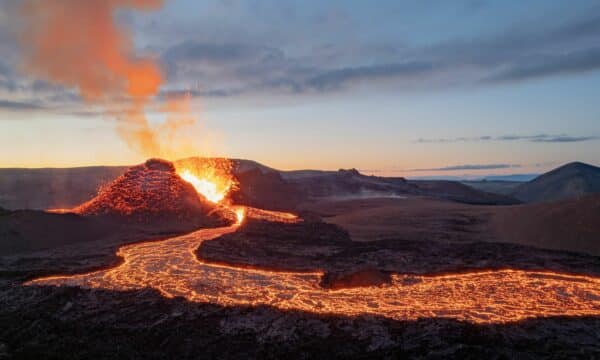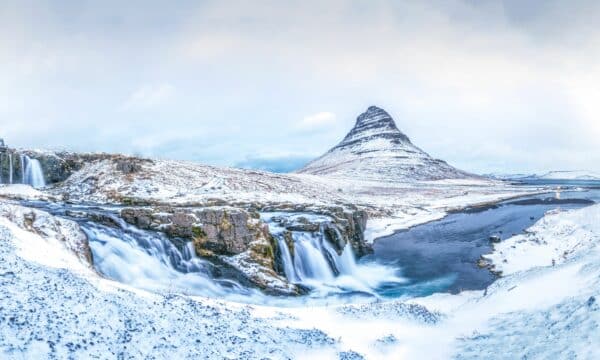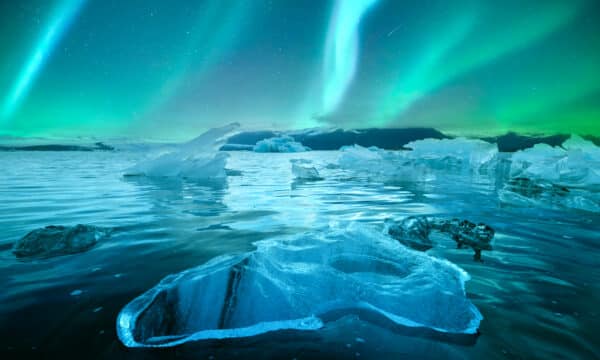- Feature image: Golden Circle Super Jeep Tour with Snowmobiling on a Glacier
Icelanders are lucky because they have many fantastic outdoor activities right on their doorstep.
Whether your idea of excitement is an adrenaline-fueled adventure, a scenic hike, or seeing spectacular natural phenomena, you are sure to find the perfect outdoor adventure here in the land of fire and ice.
1. Snowmobiling on a Glacier
One of the best ways to explore an Arctic landscape is with a snowmobile tour. Here in Iceland, not only will riding a snowmobile get your heart pumping, but you can do so on top of a glacier!
Most snowmobiling tours operate on either Langjökull or Mýrdalsjökull, Iceland’s second and fourth-largest glaciers respectively.
The difference between snowmobiling tours on Langjökull and Mýrdalsjökull is minimal. Both are available year-round and have landscapes that offer snow-capped mountains and ice as far as the eye can see.
So when picking a snowmobiling tour, we recommend you think about what else you’d like to see and do in the area.
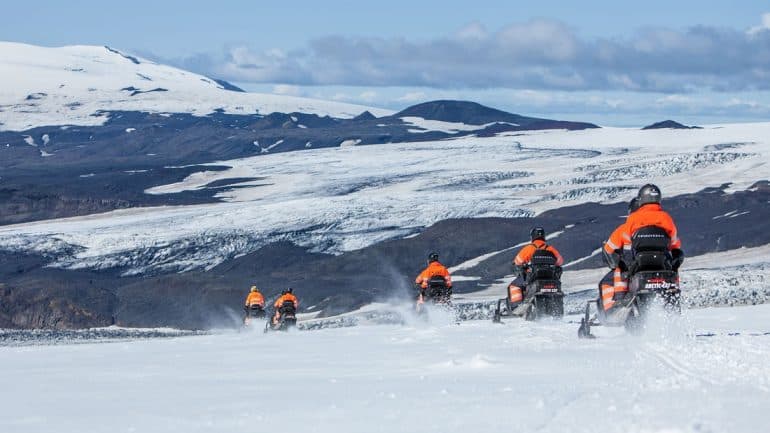
Those travelling the coastal route in South Iceland will drive by the mighty Mýrdalsjökull glacier. A stop here can make for an excellent addition to your sightseeing tour of the South Coast’s waterfalls and black sand beaches.
Langjökull, on the other hand, can be found in West Iceland. A route to this frozen giant can be found near the West’s most popular attractions, Deildartunguhver hot spring and the waterfalls Hraunfossar and Barnafoss.
Langjökull can also be reached via a Highland road from Gullfoss waterfall, one of the three sites which make up Iceland’s most popular sightseeing route. This makes it a popular addition for those looking for some thrills on their Golden Circle tour.
Snowmobiling tours can be booked as a part of a sightseeing tour or as a stand-alone tour, either with or without a transfer from Reykjavík.
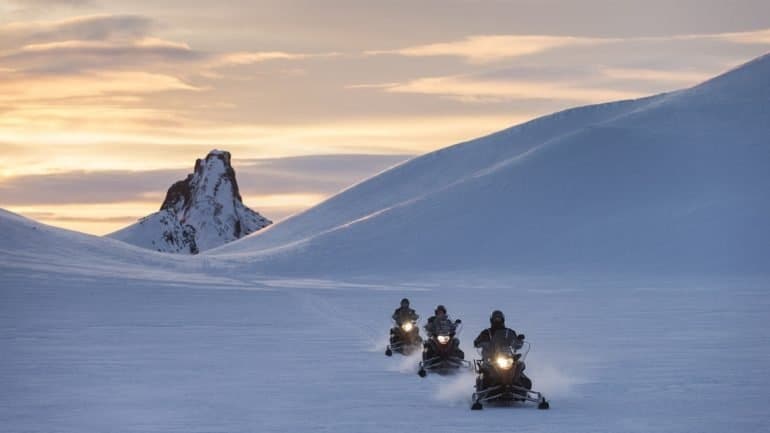
When exploring an ice cap on a snowmobile, you need to be accompanied by an expert local guide who will show you the best routes and keep you on a safe path.
All snowmobiling tours offered on Traveo are small group tours so that you’re assured of individual attention should any problems arise, or you want to ask questions about the Arctic landscape.
Before you climb aboard a snowmobile, you need to ensure you’re wearing the right protective clothing.
Thankfully, the use of a safety helmet (that also keeps your head warm), as well as protective thermal overalls and thick gloves, all come included with a snowmobiling tour.
You also must ensure that you dress appropriately for snowmobiling. You will need to bring warm clothes to wear underneath your overalls. This includes thick socks and good winter boots.
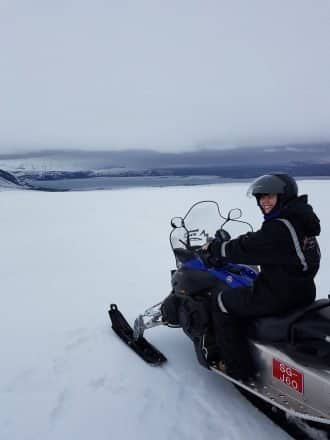
Don’t worry if you’ve never driven a snowmobile before. Anyone who can ride a bike or drive a car can easily learn to operate a snowmobile with the assistance of a professional snowmobiling guide.
Those who want to drive the snowmobile need to be at least 17 years old and have a valid driving license. However, anybody over the age of 8 is allowed to ride as a passenger.
Once you’ve put on your protective gear, your guide will show you how to operate the vehicle, after which there is nothing left but to mount your snowmobile and whizz off into the wilderness.
Snowmobiling on a glacier presents visitors with an alien landscape of eerie ice formations and glacial peaks. After you’ve driven for a while, you can pause to appreciate panoramic views of distant mountains and volcanic landscapes.
2. Glacier Hiking
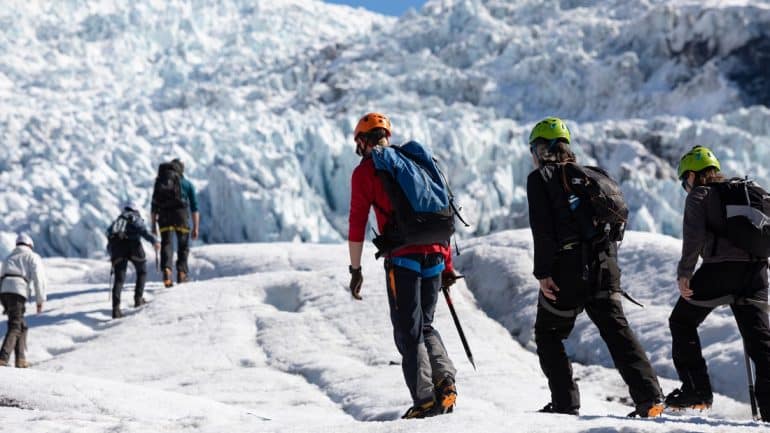
If you prefer to cross icecaps without mechanical aid, pitting your puny human strength against the mighty power of the Arctic, you’ll love glacier hiking.
If you want to make that a real challenge, choose the biggest ice cap in Europe — Vatnajökull.
In fact, Vatnajökull National Park incorporates about 14% of Iceland, including its largest glacier and several active volcanoes. It is a popular destination for glacier hikes.
A wonderful area of the park to explore on foot is Skaftafell Nature Reserve, situated between the Kirkjubæjarklaustur town and Jökulsárlón Glacier Lagoon. It is an excellent stop for those travelling from Reykjavík on their way to see the icebergs at the lagoon.
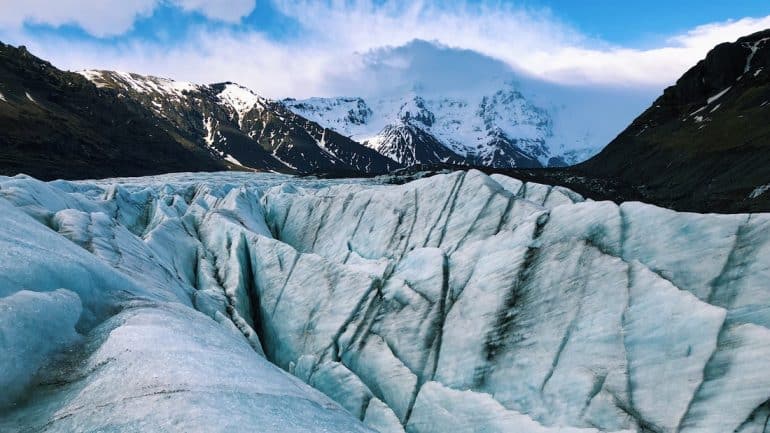
Skaftafell Nature Reserve boasts some of Iceland’s most picturesque landscapes, with birchwood forests, glacial tongues, and waterfalls.
Despite the icy terrain of the Skaftafellsjökull glacial tongue, unique plants and 30 bird species inhabit the reserve.
Another option for glacier hiking is at Sólheimajökull, a glacier outlet of the larger Mýrdalsjökull ice cap on Iceland’s South Coast.
It is a popular detour for those on a sightseeing trip of the waterfalls Seljalandsfoss and Skógafoss, as well as the black sand beach, Reynisfjara.
Next to Sólheimajökull is the infamous volcano Eyjafjallajökull Volcano which famously erupted in 2010, halting European air traffic for a few days.
Remnants of this eruption can be clearly seen at Sólheimajökull as the ice cap is lined with black streaks of volcanic ash, serving as a testament to why Iceland is nicknamed ‘The Land of Fire and Ice’.
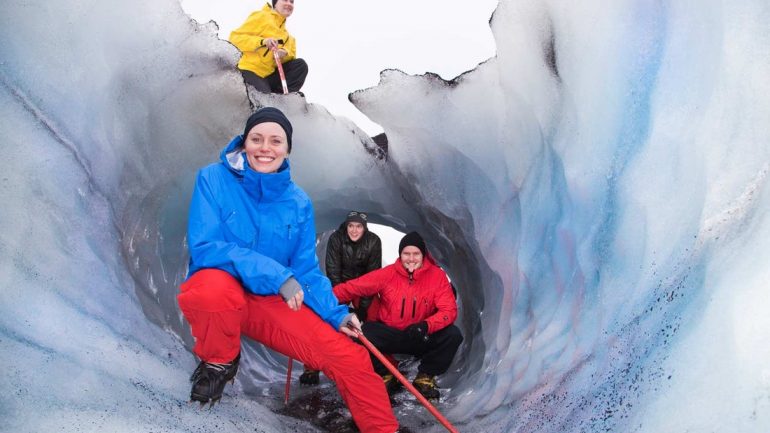
Glacier hiking is not like a stroll in the park. It’s much more exciting than that! All those able to walk for 2-6 hours on uneven surfaces should have no problem participating in a glacier hiking excursion. Minimum age varies between tours but is usually either 8 or 10 years.
It should be noted that one should never attempt to hike up a glacier without an expert glacier guide. Not only do the guides know the safest route, but they can also introduce you to Iceland’s fascinating volcanic landscapes and answer all your nature-related questions.
You’ll need the right equipment to scale a glacier, and, of course, it comes included with a guided glacier hiking tour. Essential pieces of kit include a safety helmet, an ice axe, and crampons.
On a glacier hiking tour, you’ll not only be surrounded by fantastic icy landscapes, but you’ll be far away from any interference from man. This allows you to immerse yourself fully in the wild Icelandic nature.
3. Ride in a Helicopter
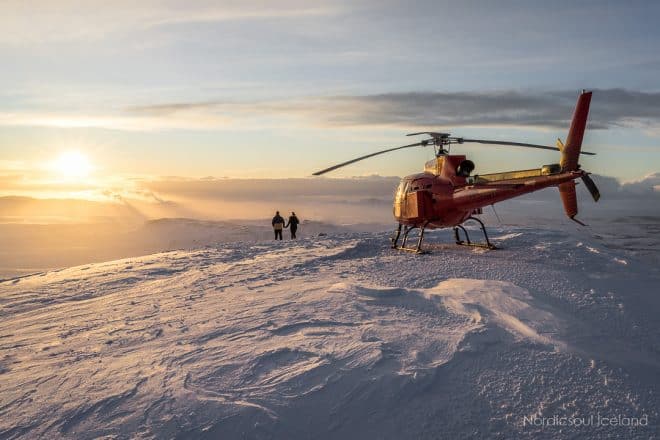
Coming face-to-face with the ice on a snowmobile or foot is a great way to learn how small humans are when faced with the grand majesty of nature.
However, suppose you want a more sweeping view than enables you to appreciate the scale of Iceland’s mountains and lava landscapes.
In that case, the best way is from inside a helicopter hovering 1,000 feet above the ice.
A helicopter can land almost anywhere where there’s a flat surface, so you can access areas difficult or impossible to reach by foot or in a snowmobile.
This means you can land on a tabletop mountain for the opportunity to take in Iceland’s breathtaking views from a unique position.
Keen amateur photographers will especially love this opportunity to capture images few others have been able to snap.
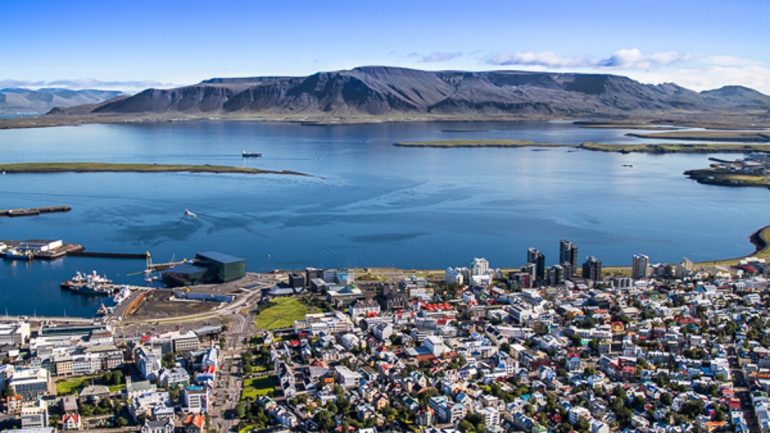
Helicopter tours depart from Reykjavík Domestic Airport, meaning that while ascending, you’ll get to enjoy a bird’s eye view of Reykjavík’s colourful urban landscape. Look for the city’s landmark structures from the sky, such as Harpa Concert Hall and Hallgrímskirkja Church!
4. Spelunking (or caving) in ice caves and lava tubes
Iceland is a paradise for cavers. This island nation offers a unique opportunity to explore two completely different kinds of caves.
Lava Caves
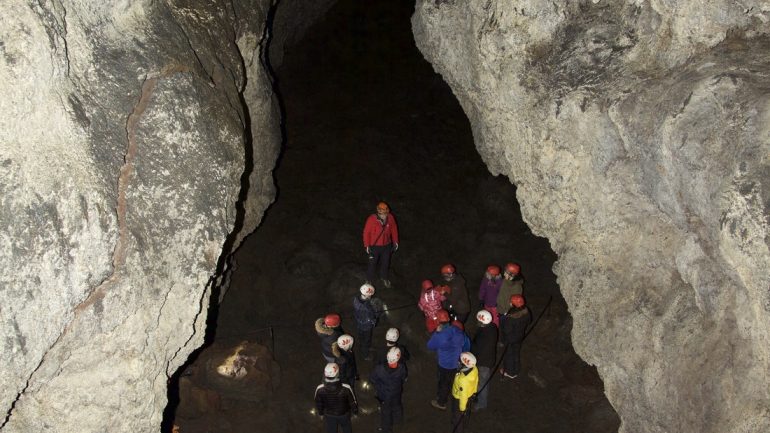
The first is a lava cave or tube. Typically, caves are formed when water erodes or wears away the surrounding rock. Lava tubes, however, are created in a volcanic eruption by the flow of molten lava.
Chemical compounds in the lava lend these caves their unusual colours which can range between bright red, yellow or purple, providing enthusiastic cavers with an original spelunking experience.
The stalactites in regular limestone caves are formed over thousands of years by calcium deposited in dripping water. On the other hand, the stalactites in lava caves are formed instantly by liquid lava dripping down from the ceiling and solidifying mid-fall.
Amidst the volcanic landscapes of the Snæfellsnes Peninsula in West Iceland is a particularly fascinating lava tunnel open for visitors.
Vatnshellir Cave is located 32 metres (105 ft) below ground, and the tunnel stretches for 200 metres (656 feet). The floor you walk upon is a solidified river of magma created in an eruption over 8,000 years ago.
Ice Caves

The other kind of cave in Iceland is an ice cave. These caves are — as the name suggests — made of ice, formed by the movement within a glacier.
The ice allows light to filter through from outside, creating unique visuals that are perfect for capturing in photos.
Ice caves in Iceland can be found within almost every one of the country’s glaciers. However, not all are safe to enter, and one should never attempt to enter an ice cave without a certified glacier guide.
The most famous ice caves can be found in Vatnajökull Glacier. Tours to these caves depart from the beautiful Jökulsárlón Glacier Lagoon and can be taken as a stand-alone tour or as a part of a package.
The ice caves in Vatnajökull are only open during the winter months — from November to March — as they flood with meltwater in the spring.
Inside these caves, you’ll be amazed by the vivid shades of blue, plus the countless air bubbles trapped inside its smooth ice walls.
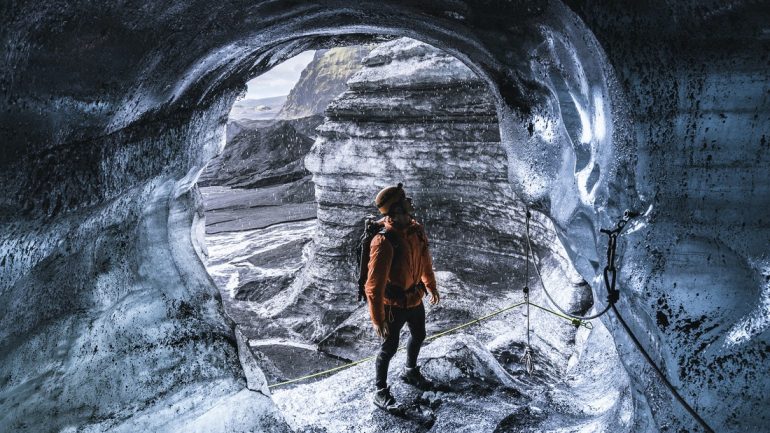
However, visiting ice caves is not just reserved for winter visitors in Iceland. Tours to the Katla ice caves in South Iceland—located beneath Mýrdalsjökull glacier—are available year-round.
The Katla ice caves differ a little from the ones in Vatnajökull but are beautiful nonetheless. They are not as blue because they are coloured by dark volcanic ash from past eruptions of nearby volcanoes.
Iceland also has two man-made ice caves, the first of which is actually a tunnel underneath Langjökull glacier. This amazing attraction allows visitors to enter much deeper into a glacier than is possible on a regular ice caving tour.
The other man-made ice cave is in Perlan Museum in Reykjavík and makes up part of the Wonders of Iceland exhibition. This cave is perfect for those with little time in Iceland, as well as anyone travelling with children too young for an ice caving tour.
5. Go Whale Watching
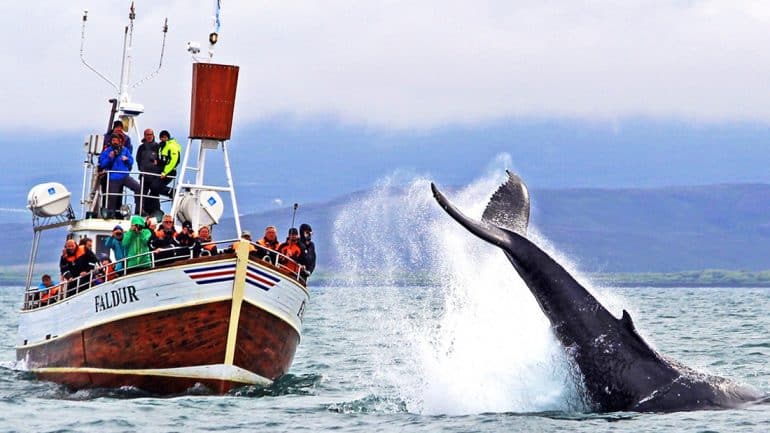
Few feelings compare to the rush one gets on a whale watching tour.
Seeing the dark shadow of a whale swimming just under the surface is sure to get your adrenaline going. Looking at these creatures, it is impossible not to recognise the sheer enormity, as well as how small we are in comparison.
You might hear the sound of them spout water out of their blowholes before seeing them actually breech. Fear not if it takes some time; patience is a virtue while whale watching, and always worth the pay-off.
Over 20 species of whales and dolphins are found in the waters around Iceland, and if you want to get up close to the world’s largest mammals, the best way to do this is to take a whale-watching boat trip.

You can take a whale watching tour from Reykjavík city, the Snæfellsnes peninsula, and in the northern towns of Akureyri and Húsavík (the latter is often nicknamed ‘The Whale Watching Capital of Iceland’).
Whale watching tours are available year-round. However, your chances of seeing them are slightly higher in the summer months, between April and October, because many whales migrate to warmer waters in the winter.
The summer months also offer the opportunity to spot another migrating species: the Atlantic puffin. From late May through August, whale-watching excursions often sail close to islands, skerries or cliffs where these adorable birds nest.
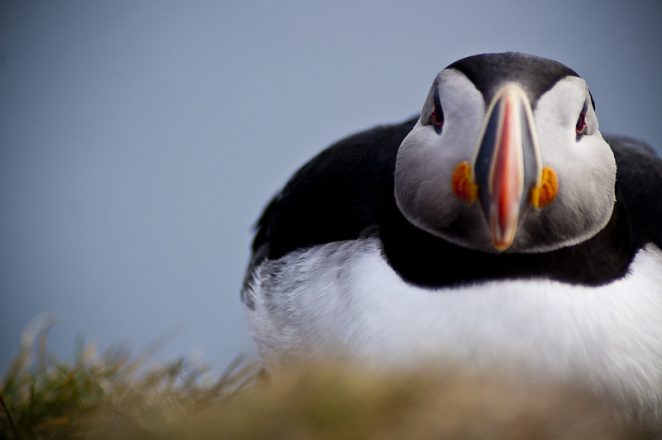
During a whale-watching tour, you may also encounter friendly porpoises and dolphins. However, whales and other marine animals are wild, so occasionally a whale-watching boat trip will fail to locate any whales.
The sign of a reputable whale-watching tour is that the tour operator will offer a free second tour if no whales are spotted on your first go. So make sure not to book an excursion on your last day in Iceland.
6. Snorkel between Continents
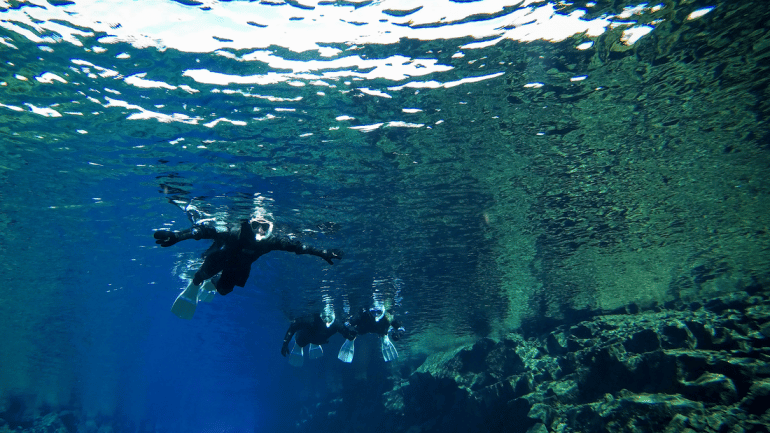
The Mid-Atlantic Ridge separates the Eurasian continental plate from the North American continental plate, both of which run right through Iceland.
The boundary between these is best seen at Þingvellir National Park, one of the three main sites which make up the famous Golden Circle sightseeing route (—along with Gullfoss Waterfall and Geysir geothermal area).
Þingvellir is known as the birthplace of Iceland’s democracy as it is here where Viking settlers gathered in 930 CE to form this country’s parliament, Alþingi.
The park’s geology is also fascinating. The continental plates are constantly moving, which creates rifts and cracks in the surrounding landscapes. One of the fissures at Þingvellir is called Silfra and is now a popular scuba diving and snorkelling site.
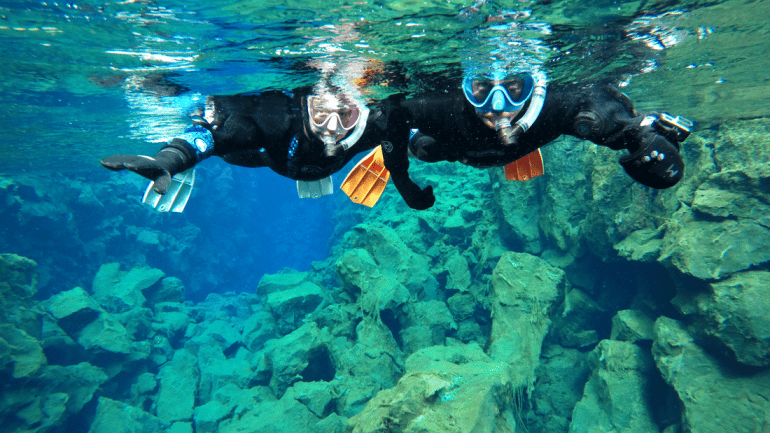
This narrow rift on the shores of Lake Þingvallavatn is filled with meltwater from Langjökull Glacier that has been filtered through a porous lava field.
The glacial meltwater resurfaces through springs within the rift creating an underwater environment of exceptionally clear water, perfect for snorkelling enthusiasts.
Visibility in Silfra can reach up to 100 metres, and those on a snorkelling tour can expect unique underwater rock formations, along with the unusual fact that they’d be snorkelling between two continents!
Snorkelling tours in Silfra take about two hours and can be added to most sightseeing tours of the Golden Circle. Certified PADI divers can explore Silfra further on a 3-5 hour diving tour.
7. Hunt for the Northern Lights
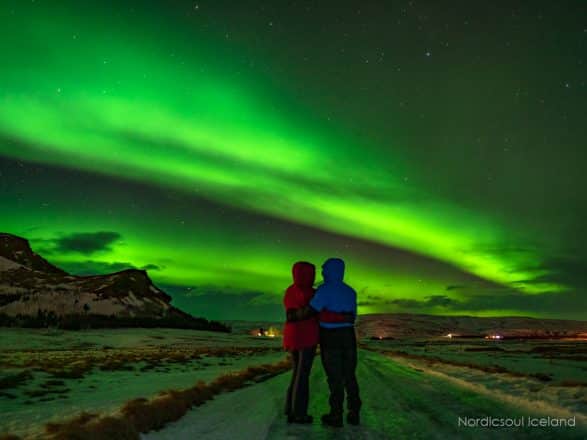
Though not as heart-racing as snowmobiling or riding in a helicopter, hunting for the northern lights is one of the most exciting activities one can do here in Iceland.
It is the suspense of whether or not they will show up paired with the relief and awe when they finally do which earns this activity our #7 spot on this list.
The northern lights, or aurora borealis, are a celestial phenomenon which occurs only in the northern hemisphere (in the South they are known as the southern lights or aurora australis).
They happen when solar particles penetrate the earth’s magnetic shield and collide with atoms and molecules. This results in ribbons of mostly green lights — but sometimes pink, purple and white — which dance in the night’s sky.
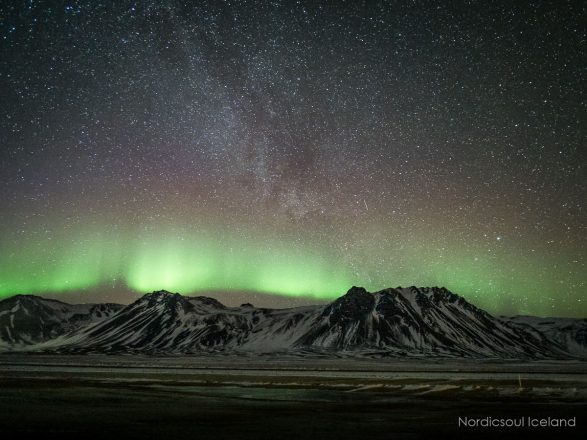
Northern lights in Iceland are only visible when the sky is dark and clear of clouds. In the summer, we have the midnight sun, meaning that it is too bright for any northern lights to appear.
Therefore, the optimal time to witness the northern lights in Iceland is between September and April.
The bright city lights of Reykjavík often make seeing these lights difficult in the capital, which is why northern light hunters are advised to head into the dark countryside to increase their chances of finding them.
If you don’t have your own car, you can always book a northern lights tour. Not only will you be taken far away from the city, but you’ll have a guide who will be able to use their knowledge of nature to find the perfect spot to witness this celestial wonder.
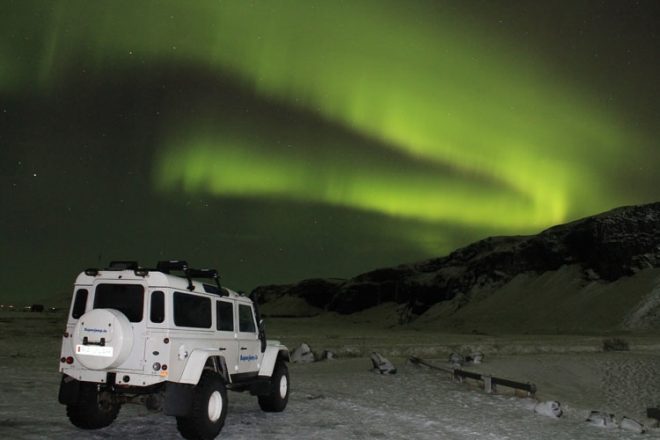
Your time here in Iceland is precious. So as not to waste your time, each evening, the operators of northern lights tours look at the weather forecast to see if the conditions of spotting the elusive auroras are good. If they are not, they will contact you and reschedule for another time.
As with the whale watching tours, if your northern lights hunt is unsuccessful, you are free to join another tour at another time. So make sure not to book your tour on your last evening here in Iceland.
Final Thoughts

Though Iceland might be known for cold weather and snow, the weather doesn’t limit the options for exciting outdoor activities.
In fact, if it weren’t for the ice here, glacier adventures such as snowmobiling, glacier hiking, and ice caving wouldn’t be possible.
The country’s volcanic geology is also responsible for some of the more unusual things on this list, such as stepping inside a lava cave and snorkelling between continents.
So, are you thinking about visiting Iceland and trying out some of these thrilling adventures? Which one would you like to do? Let us know in the comment section below.

